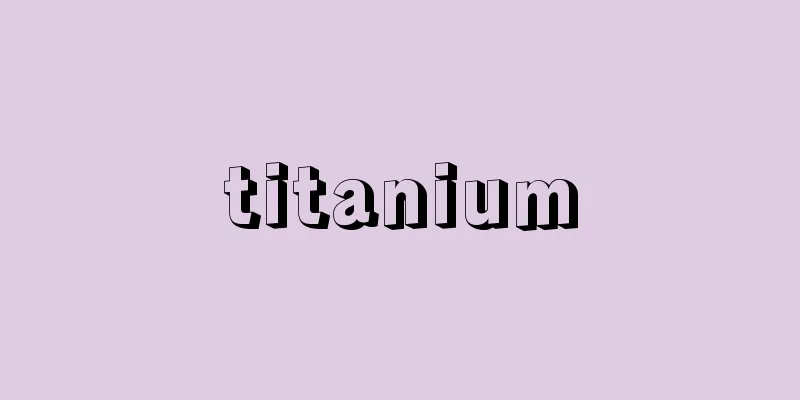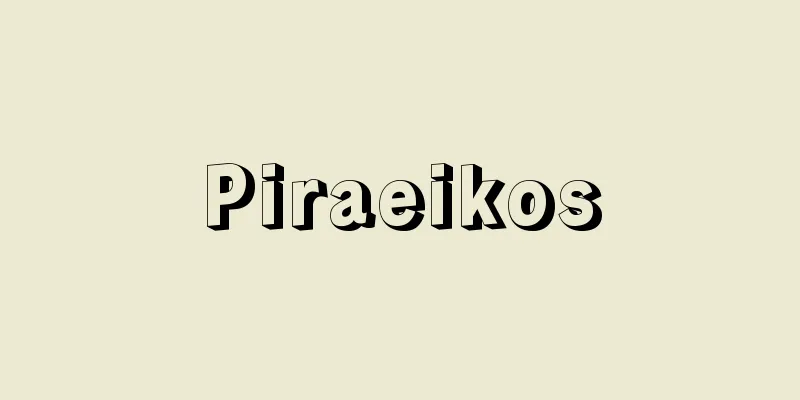|
Ti. Atomic number 22. Group 4 transition element in the periodic table with electron configuration [Ar] 3d24s2 . Atomic weight 47.867(1). Stable isotopes are 46 (8.25(3)%), 47 (7.44(2)%), 48 (73.72(3)%), 49 (5.41(2)%), and 50 (5.18(2)%). Isotopic species with mass numbers 38 to 63 are known. In 1791, W. Gregor of England discovered the mineral rutile in iron sand from Cornwall, and in 1795, MH Klaproth of Germany discovered that rutile was an oxide of a new element and named it titanium after Titan, the giant god in Greek mythology. Udagawa Yoan wrote it as titanium in his book "Semitsu Kaisyu" published in 1837. The Japanese name for this element is based on the German name for this element.
It has been considered a rare element, but is widely distributed. Its abundance in the earth's crust is 5400 ppm. It occurs naturally as rutile (titanium dioxide) TiO 2 , itatixite (TiO 2 ) , anthracite (TiO 2 ) , ilmenite (iron ore) FeTiO 3 , perovskite CaTiO 3 , and titanite CaO・TiO 2 ・SiO 2 , but the main industrial raw materials are ilmenite and rutile. The proven reserves of ilmenite (1,400 million t), which account for over 90% of titanium demand, are in China (25%), followed by South Africa and India (15% each), and Australia (11%). The Kroll or Hunter process is used for smelting. In the Kroll process, developed in the 1930s, titanium tetrachloride is produced by adding chlorine to red-hot ilmenite or rutile together with carbon, which is then purified by fractional distillation and reduced with metallic magnesium molten at 800-900 °C in helium or argon. The reaction product is evaporated in a vacuum at 1000 °C, and the Mg and MgCl2 are removed. The resulting product is sponge-like, called titanium sponge, and contains about 99.5% titanium. The sponge is pressed into a shape, welded to make electrodes, and melted by vacuum arc melting to make ingots. Electron beam melting under high vacuum and plasma beam melting in an inert atmosphere are also used. The Hunter process uses metallic sodium as a reducing agent, and in 1910, this process was the first to produce pure metal industrially. Because the sponge produced by this process contains few impurities such as iron and nickel, only small-scale plants for the production of raw materials for electronics products are in operation, but it has been almost entirely replaced by the Kroll process, which is more suitable for reducing costs through large-scale production. To obtain titanium of extremely high purity, the Van Arkel-de Boer process is used, in which titanium iodide (TiI 4) vapor is decomposed on a tungsten filament at 1300 °C. The Kroll process is a batch process and is not suitable for continuous operation. Titanium metal is silver-gray in color and exists in two types, α and β. The α type is a hexagonal crystal system, and at a transition point of 882 °C or higher it becomes the β type with a cubic crystal system. It is paramagnetic. Its density is 4.54 g cm -3 (20 °C). Its melting point is 1660 °C and boiling point is 3287 °C. It has excellent strength, heat resistance, and corrosion resistance, and its thermal conductivity and thermal expansion coefficient are small. Its metallic bond radius is 0.145 nm, and its ionic radius is 0.081 nm (Ti 3+ , hexacoordinated) and 0.075 nm (Ti 4+ , hexacoordinated). Its first ionization energy is 6.82 eV, and its oxidation states are -1, 0, 2 to 4. It is most commonly formed as a Ti IV compound. Titanium is stable at low temperatures, but becomes very active at high temperatures, and directly combines with many nonmetals. In air, it gradually forms a very thin oxide film even at room temperature. At temperatures between 200 and 500°C, the film thickens as the temperature rises, and changes color to brown, dark blue, purple, etc. depending on the thickness. At higher temperatures, the surface first becomes cloudy gray-white, then changes to silver-white and dark gray layers. In oxygen, it burns with a flame at 610°C, becoming TiO2 . It directly combines with nitrogen at temperatures above 800°C to become titanium nitride TiN. It forms TiF4 with fluorine at 150°C, and TiCl4 with chlorine at 300°C. It also forms TiSi2 with silicon at high temperatures. Powdered titanium absorbs hydrogen. It forms alloys with many metals. It is not attacked by dilute hydrochloric acid or dilute alkali, but dissolves well in hydrofluoric acid as [ TiF6 ] 3- .
Metallic titanium has a low specific gravity (about half that of steel) and excellent strength and corrosion resistance, so it is used in pipes and reactors in the petroleum and chemical industries, as well as in the structural materials of jet engines, aircraft, and submarines. Various titanium alloys are made and used in artificial bones and joints, eyeglass frames, golf clubs, and other sporting goods. In Japan, demand for titanium as a metal is less than one-tenth of the total demand. [CAS 7440-32-6][See other terms]Titanium compounds Source: Morikita Publishing "Chemical Dictionary (2nd Edition)" Information about the Chemical Dictionary 2nd Edition |






![Chihayaakasaka [village] - Chihayaakasaka](/upload/images/67cc2f1f24a93.webp)



